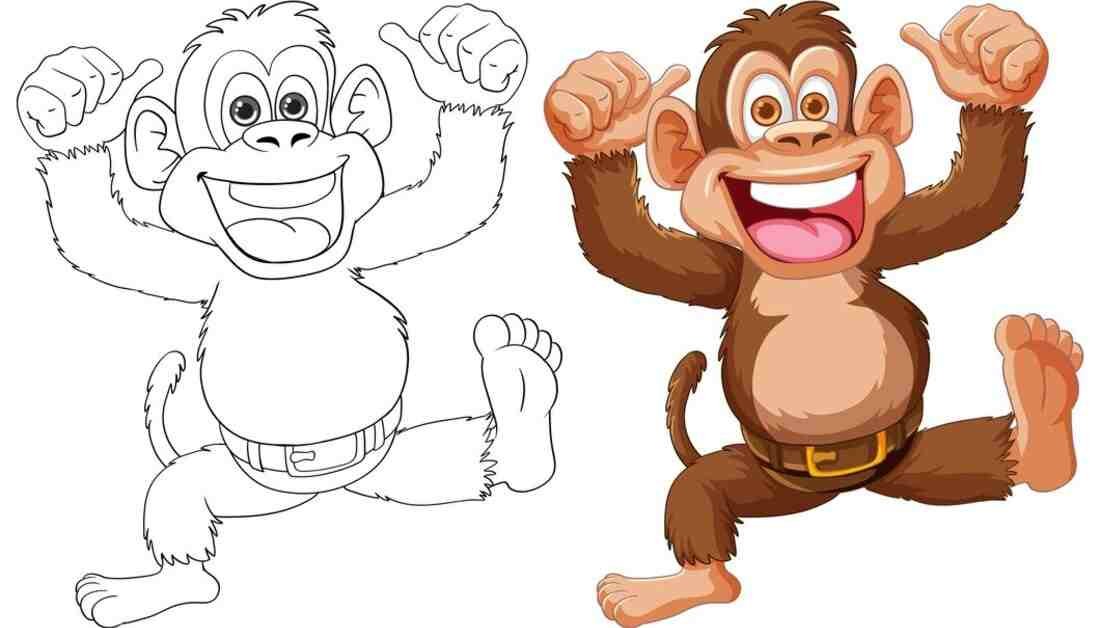Drawing is a delightful and enriching hobby that allows us to express our creativity and imagination. Among various subjects, drawing animals, particularly monkeys, can be both challenging and rewarding. Monkeys, with their expressive faces and agile bodies, offer a unique subject for artists. In this comprehensive guide, we will explore various techniques and tips to help you master the art of drawing monkeys.
Understanding Monkey Anatomy
Before you start drawing, it is essential to understand the basic anatomy of monkeys. drawing:uqp7yroofp0= monkeys belong to the primate family and have certain distinct features. Key anatomical features include:
- Head: Monkeys have a relatively large head with expressive eyes, a flat nose, and a pronounced mouth. Their ears are usually prominent and positioned on the sides of the head.
- Body: The body is typically slender and agile, allowing for a wide range of movements.
- Limbs: Monkeys have long limbs with opposable thumbs, which enable them to grasp and manipulate objects.
- Tail: Many monkey species have a long, prehensile tail that aids in balance and movement.
Materials Needed
To get started with your monkey drawing, you will need the following materials:
- Sketchbook or drawing paper
- Pencils (HB, 2B, 4B, and 6B)
- Eraser
- Sharpener
- Blending stump or cotton swabs
- Reference images of monkeys
Step-by-Step Guide to Drawing a Monkey
1. Drawing the Basic Shapes
Begin by drawing the basic shapes that form the foundation of your monkey drawing. Use light, gentle strokes with an HB pencil:
- Head: Draw a large oval for the head.
- Body: Below the head, draw a smaller oval for the body.
- Limbs: Sketch elongated ovals for the arms and legs.
- Tail: Add a long, curved line for the tail.
2. Refining the Head
Focus on the head and start adding details:
- Eyes: Draw two large circles for the eyes. Add smaller circles inside for the pupils.
- Nose: Sketch a small, flat nose just below the eyes.
- Mouth: Draw a curved line for the mouth, adding detail to make it expressive.
- Ears: Add two half-circles on the sides of the head for the ears.
3. Developing the Body and Limbs
Work on refining the body and limbs:
- Arms and Legs: Draw more defined shapes for the arms and legs, adding joints and muscles.
- Fingers and Toes: Add small ovals for the fingers and toes, emphasizing the opposable thumbs.
- Tail: Refine the shape of the tail, making it look more natural and balanced.
4. Adding Fur and Texture
To give your drawing:uqp7yroofp0= monkey drawing a realistic appearance, add fur and texture:
- Short, Quick Strokes: Use short, quick strokes with a 2B pencil to add fur to the head, body, and limbs.
- Direction of Fur: Follow the natural direction of the fur, paying attention to areas where it may be thicker or thinner.
- Blending: Use a blending stump or cotton swabs to smooth out the fur, giving it a soft, realistic texture.
5. Shading and Highlights
Shading and highlights add depth and dimension to your drawing:
- Light Source: Determine the direction of your light source to guide your shading.
- Shading: Use a 4B pencil to add shading to areas that are in shadow, such as the underside of the limbs and body.
- Highlights: Leave areas that catch the light, such as the top of the head and the upper parts of the limbs, lighter.
6. Final Touches
Finally, review your drawing and make any necessary adjustments:
- Details: Add fine details, such as the texture of the skin on the face and the individual strands of fur.
- Eraser: Use an eraser to clean up any stray lines and to add highlights.
- Contrast: Enhance the contrast between light and dark areas to make your drawing more dynamic.
Tips for Drawing Monkeys
- Use Reference Images: Always use reference images of real monkeys to guide your drawing. This helps you capture accurate proportions and details.
- Practice Regularly: Like any skill, drawing improves with practice. Set aside time each day to work on your drawing skills.
- Experiment with Different Styles: Try different drawing styles, such as realistic, cartoon, or abstract, to find what you enjoy most.
- Study Monkey Behavior: Observing monkeys in videos or at a zoo can provide valuable insights into their movements and expressions.
Conclusion
Drawing:uqp7yroofp0= monkeys can be a fulfilling and enjoyable experience for artists of all levels. By understanding their anatomy, using the right materials, and following a step-by-step approach, you can create detailed and realistic monkey drawings. Remember to practice regularly, use reference images, and have fun with the process. Happy drawing!
